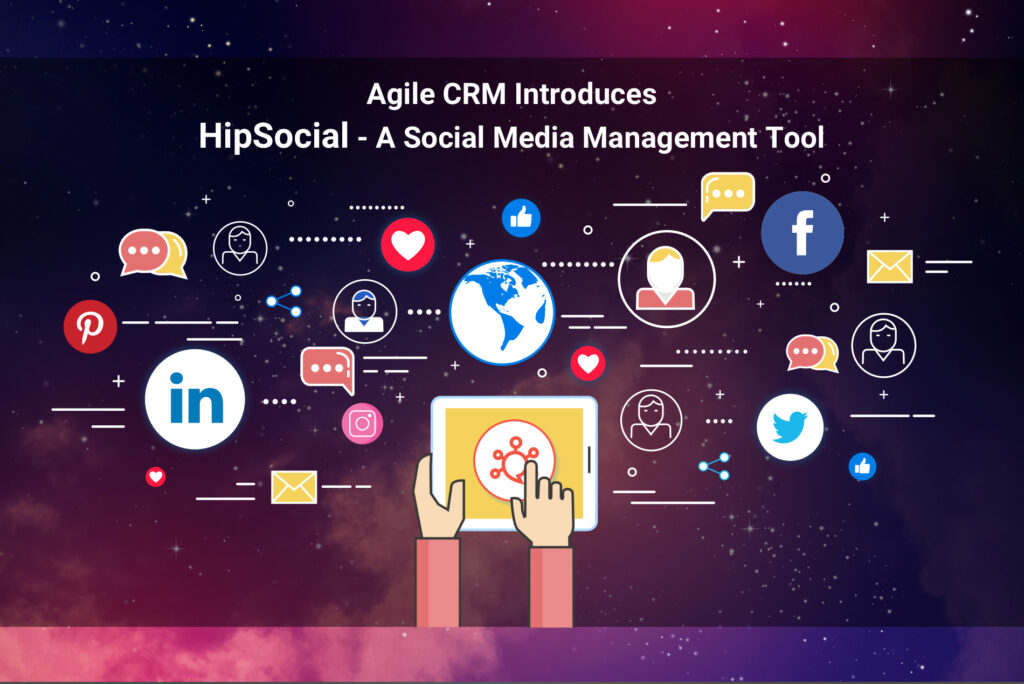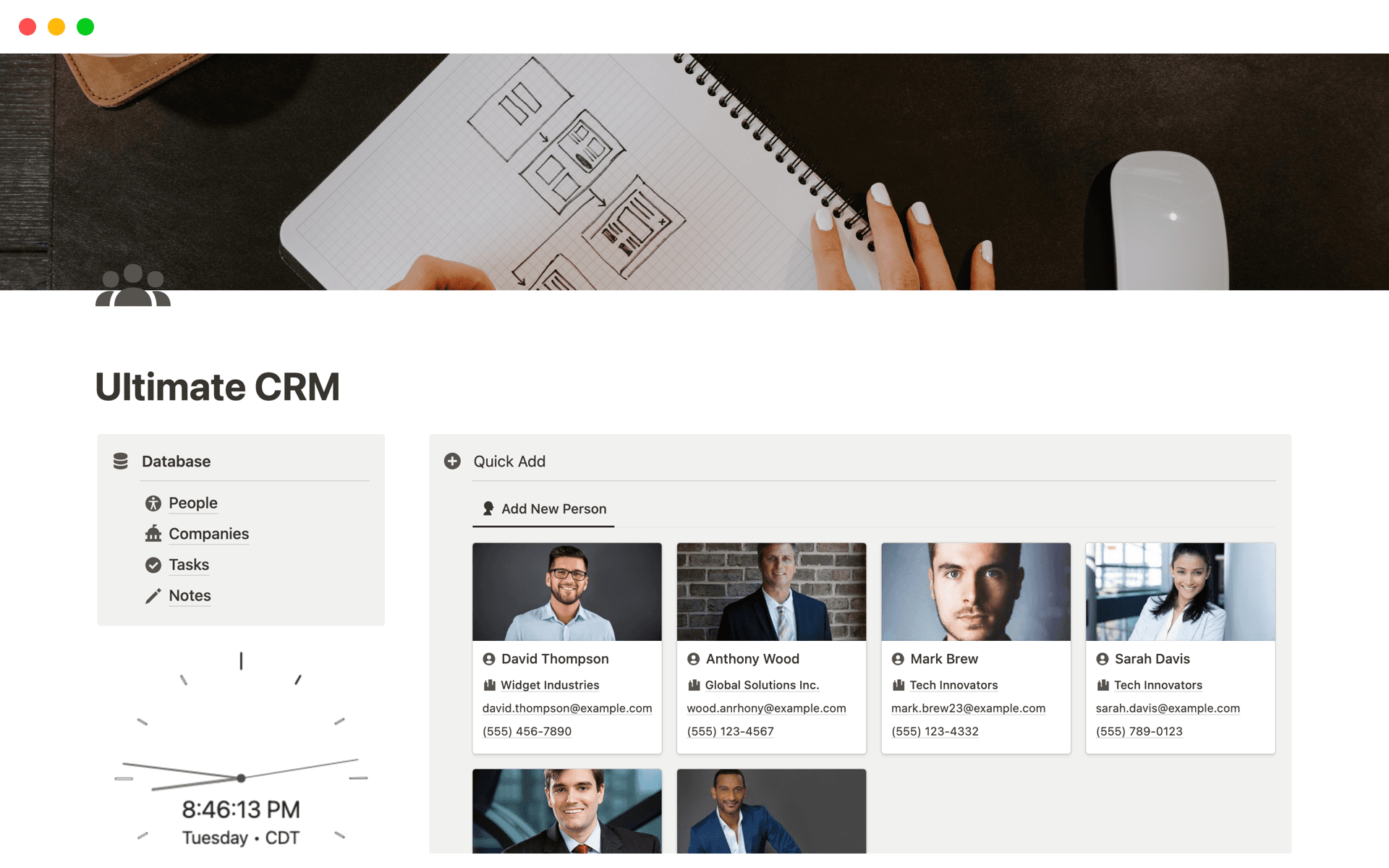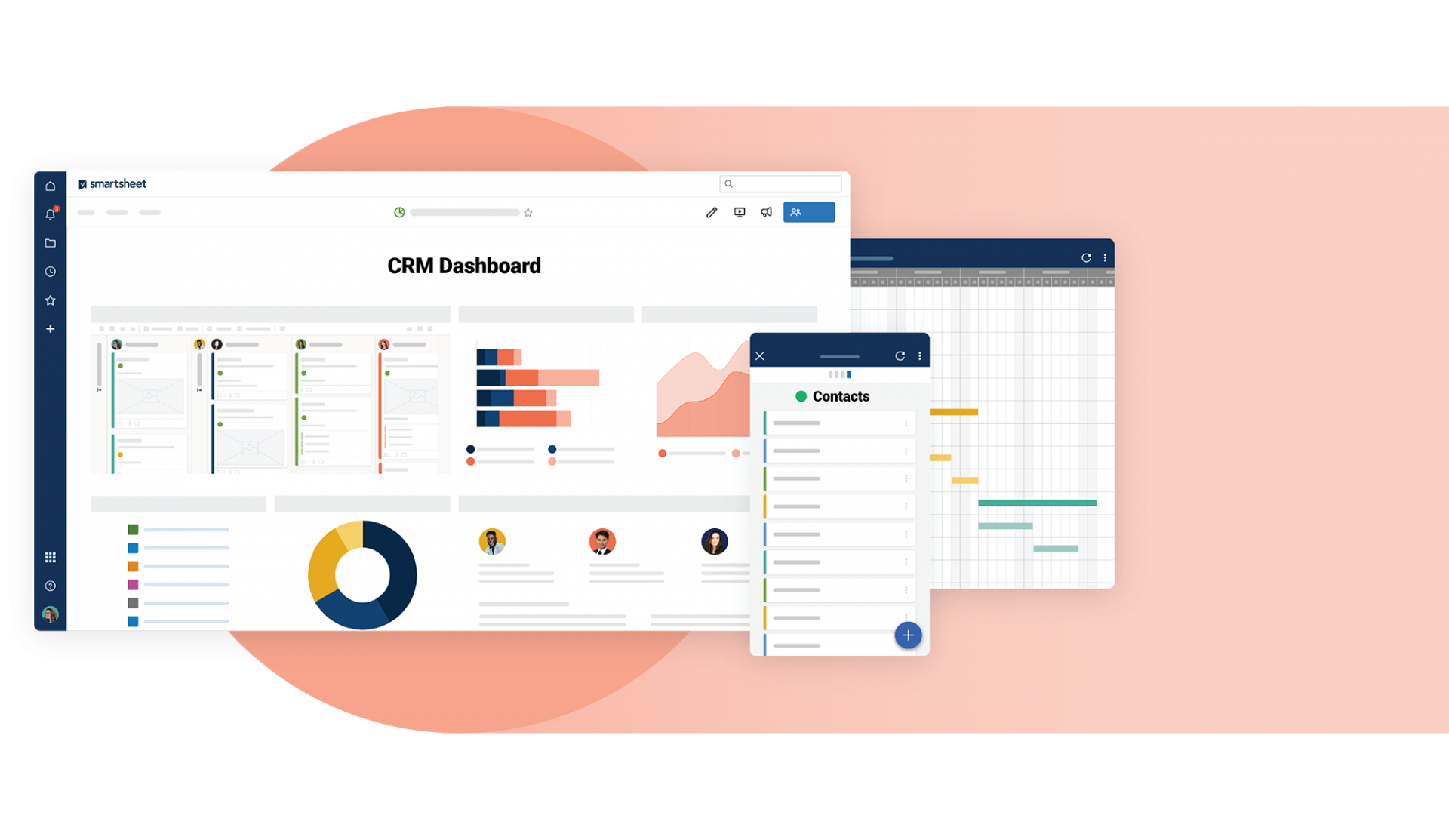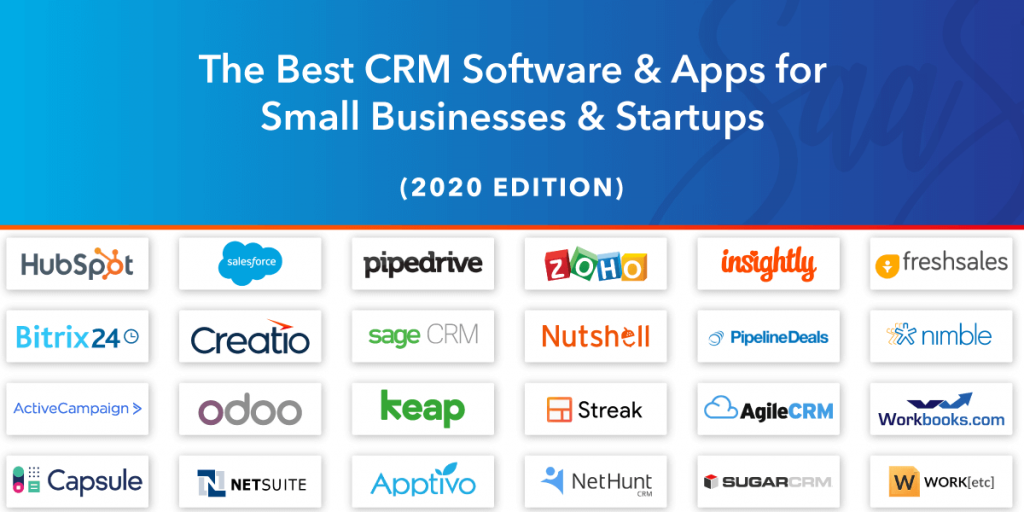Unlocking Growth: Mastering CRM, Social Media, and Marketing Integration

The Power of Integration: CRM, Social Media, and Marketing United
In today’s fast-paced digital landscape, businesses are constantly seeking ways to connect with their audience, build brand loyalty, and drive sales. The key to achieving these goals lies in the seamless integration of Customer Relationship Management (CRM) systems, social media platforms, and marketing strategies. This article delves into the intricacies of this powerful synergy, exploring how businesses can harness its potential to achieve remarkable results.
The world of marketing has undergone a seismic shift. Gone are the days of isolated campaigns and siloed data. Today, success hinges on a holistic approach, where every touchpoint contributes to a unified customer experience. This is where the integration of CRM, social media, and marketing comes into play. It’s not just about connecting the dots; it’s about creating a cohesive ecosystem that empowers businesses to understand their customers better, engage them more effectively, and ultimately, drive revenue growth.
Understanding the Core Components: CRM, Social Media, and Marketing
Before diving into the specifics of integration, let’s define the core components:
CRM (Customer Relationship Management)
At its heart, CRM is a system designed to manage and analyze customer interactions and data throughout the customer lifecycle. It’s a central repository for all customer-related information, from contact details and purchase history to communication logs and support tickets. A robust CRM system provides businesses with a 360-degree view of their customers, enabling them to:
- Personalize interactions
- Improve customer service
- Identify sales opportunities
- Streamline processes
- Make data-driven decisions
Popular CRM platforms include Salesforce, HubSpot CRM, Zoho CRM, Microsoft Dynamics 365, and Pipedrive.
Social Media
Social media platforms have become integral to modern marketing strategies. They provide businesses with unparalleled opportunities to connect with their target audience, build brand awareness, and drive engagement. Social media allows for:
- Direct communication with customers
- Real-time feedback and insights
- Targeted advertising
- Community building
- Content distribution
Key social media platforms include Facebook, Instagram, Twitter (X), LinkedIn, TikTok, and Pinterest.
Marketing
Marketing encompasses all the activities a business undertakes to promote its products or services to potential customers. It involves a wide range of strategies and tactics, including:
- Content marketing
- Email marketing
- Search engine optimization (SEO)
- Paid advertising (PPC)
- Event marketing
- Public relations
Effective marketing efforts are crucial for generating leads, nurturing prospects, and converting them into paying customers.
The Benefits of Integrating CRM, Social Media, and Marketing
The true power of these three components is unleashed when they are integrated. This integration unlocks a wealth of benefits, including:
Enhanced Customer Understanding
By connecting CRM data with social media activity, businesses gain a deeper understanding of their customers. They can track customer behavior across multiple channels, identify their preferences, and tailor their messaging accordingly. This leads to more personalized and relevant customer experiences.
Improved Lead Generation and Qualification
Social media platforms are a goldmine for lead generation. Integrated systems allow businesses to capture leads directly from social media, track their engagement, and qualify them based on their behavior and interactions. This streamlines the sales process and ensures that sales teams focus on the most promising leads.
Increased Sales and Revenue
By providing sales teams with a 360-degree view of their prospects, integrated systems empower them to close more deals. Sales reps can access customer data, social media interactions, and marketing campaign performance all in one place, allowing them to make informed decisions and personalize their outreach. This leads to higher conversion rates and increased revenue.
Streamlined Marketing Campaigns
Integrated systems enable marketers to automate and personalize their campaigns. They can segment their audience based on CRM data and social media behavior, then deliver targeted messages across multiple channels. This results in higher engagement rates, improved campaign performance, and a better return on investment (ROI).
Enhanced Customer Service
Integrating social media with CRM allows customer service teams to monitor social media mentions and address customer inquiries in real-time. This leads to faster response times, improved customer satisfaction, and a stronger brand reputation.
Data-Driven Decision Making
Integrated systems provide businesses with a holistic view of their marketing and sales performance. They can track key metrics, analyze trends, and make data-driven decisions to optimize their strategies. This leads to continuous improvement and better business outcomes.
Strategies for Integrating CRM, Social Media, and Marketing
Successfully integrating these three components requires a well-defined strategy and the right tools. Here are some key steps to follow:
1. Choose the Right Tools
The first step is to choose the right CRM, social media management, and marketing automation tools. Consider your business needs, budget, and technical capabilities. Look for tools that offer seamless integration capabilities. Some platforms, like HubSpot, offer a comprehensive suite of tools that integrate seamlessly with each other.
Here are some popular tools for each area:
- CRM: Salesforce, HubSpot CRM, Zoho CRM, Microsoft Dynamics 365, Pipedrive
- Social Media Management: Hootsuite, Sprout Social, Buffer, Later, SocialPilot
- Marketing Automation: HubSpot Marketing Hub, Marketo, Pardot, ActiveCampaign, Mailchimp
2. Define Your Goals and Objectives
Before you start integrating, it’s important to define your goals and objectives. What do you want to achieve by integrating these systems? Are you looking to generate more leads, improve customer service, or increase sales? Having clear goals will help you choose the right tools and measure your success.
3. Map Your Customer Journey
Understand how your customers interact with your business across different channels. Map out the customer journey, from initial awareness to purchase and beyond. This will help you identify the key touchpoints where you can integrate your systems.
4. Integrate Your Data
The core of integration is connecting your data. This involves syncing your CRM data with your social media and marketing platforms. This can be done through native integrations, third-party apps, or custom integrations. The goal is to ensure that data flows seamlessly between your systems.
5. Automate Your Workflows
Automation is key to maximizing the benefits of integration. Use marketing automation tools to automate repetitive tasks, such as lead nurturing, email marketing, and social media posting. This will free up your team’s time and allow them to focus on more strategic initiatives.
6. Personalize Your Messaging
Use the data you collect to personalize your messaging. Segment your audience based on their CRM data and social media behavior, and then tailor your messages to their specific interests and needs. This will lead to higher engagement rates and improved conversion rates.
7. Track and Analyze Your Results
Regularly track and analyze your results to measure the effectiveness of your integration efforts. Use the data to identify areas for improvement and optimize your strategies. Key metrics to track include lead generation, conversion rates, customer satisfaction, and ROI.
Practical Examples of Integration in Action
Let’s look at some real-world examples of how businesses are using CRM, social media, and marketing integration to achieve success:
Example 1: Lead Generation and Nurturing
A B2B software company integrates its CRM with LinkedIn. They use LinkedIn’s lead generation forms to capture leads and automatically sync the data with their CRM. Based on the lead’s profile information and LinkedIn activity, the CRM triggers a series of automated email nurturing campaigns. The emails are personalized and offer valuable content, such as white papers and case studies. As the leads engage with the content, their lead score increases, and the sales team is notified when a lead is ready for a sales call.
Example 2: Customer Service and Social Listening
A retail company integrates its CRM with Twitter. They use social listening tools to monitor Twitter mentions and identify customer complaints or inquiries. When a customer tweets about a problem, the customer service team can immediately access their CRM data, see their purchase history, and resolve the issue quickly. This leads to improved customer satisfaction and a stronger brand reputation.
Example 3: Targeted Advertising and Retargeting
An e-commerce company integrates its CRM with Facebook Ads. They segment their audience based on their purchase history and website behavior. They then create targeted ad campaigns to promote specific products or offer special discounts. They also use retargeting ads to show ads to website visitors who didn’t make a purchase. This leads to higher conversion rates and increased sales.
Overcoming the Challenges of Integration
While the benefits of integration are undeniable, there are also challenges to consider:
Data Silos
Data silos can prevent information from flowing seamlessly between systems. To overcome this, ensure that your systems can communicate with each other and that your data is properly formatted and cleaned.
Technical Complexity
Integrating different systems can be technically complex. Consider using platforms that offer pre-built integrations or hiring a consultant to help with the process.
Data Privacy and Security
Protecting customer data is paramount. Ensure that your integrated systems comply with all relevant data privacy regulations, such as GDPR and CCPA. Implement robust security measures to protect customer data from unauthorized access.
Lack of Internal Alignment
Integration requires collaboration between different teams, such as marketing, sales, and customer service. Ensure that everyone is on the same page and that there is a clear understanding of roles and responsibilities.
Measuring ROI
It can be challenging to measure the ROI of integration efforts. Establish clear metrics and track your progress regularly. Use data to identify areas for improvement and optimize your strategies.
The Future of CRM, Social Media, and Marketing Integration
The integration of CRM, social media, and marketing is an evolving field. As technology advances, we can expect to see even more sophisticated integration capabilities. Here are some trends to watch:
AI-Powered Personalization
Artificial intelligence (AI) is playing an increasingly important role in marketing. AI-powered tools can analyze vast amounts of data to identify customer preferences and personalize messaging in real-time. This will lead to even more relevant and engaging customer experiences.
Hyper-Personalization
Businesses are moving beyond basic personalization to hyper-personalization, which involves tailoring every aspect of the customer experience to the individual. This requires a deep understanding of customer data and the ability to deliver personalized content, offers, and experiences across multiple channels.
Omnichannel Marketing
Omnichannel marketing involves delivering a seamless customer experience across all channels, including email, social media, website, and in-person interactions. Integrated systems are essential for delivering a true omnichannel experience.
Voice Search and Chatbots
Voice search and chatbots are becoming increasingly popular. Businesses are using these technologies to provide instant customer support and personalize their interactions. Integrated systems can be used to track customer interactions with chatbots and provide personalized responses.
The Rise of the Metaverse
The metaverse is a virtual world where people can interact with each other and businesses. Integrated systems will be crucial for businesses to engage with customers in the metaverse and deliver personalized experiences.
Conclusion: Embracing the Power of Integrated Marketing
Integrating CRM, social media, and marketing is no longer a luxury; it’s a necessity for businesses that want to thrive in today’s competitive landscape. By embracing this powerful synergy, businesses can gain a deeper understanding of their customers, improve their engagement, drive sales, and build lasting relationships. The key is to choose the right tools, define your goals, map your customer journey, integrate your data, automate your workflows, personalize your messaging, and track your results. As technology continues to evolve, the potential for integration will only grow. Businesses that embrace this trend will be well-positioned to succeed in the future.
Start by assessing your current systems and identifying areas where you can improve integration. Start small and gradually expand your efforts as you gain experience. Don’t be afraid to experiment and try new things. The journey to integration is an ongoing process, but the rewards are well worth the effort.
By prioritizing the integration of CRM, social media, and marketing, businesses can unlock their full potential and achieve remarkable results. It’s about creating a customer-centric ecosystem that empowers businesses to connect with their audience, build brand loyalty, and drive sustainable growth. The time to act is now. Take the first step towards a more integrated future and watch your business flourish.




